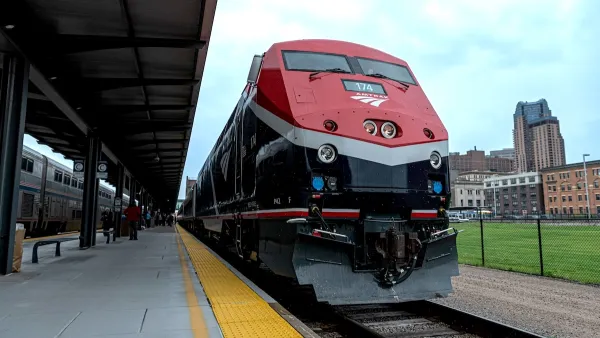Chicago magazine reports on how developers are responding to a growing share of Chicago residents who don't own a car.
To explain trends toward transit-oriented development in Chicago, Whet Moser notes that Chicago has a high percentage of residents living in single-person households, without children, spouses, or roommates. Thirty-seven percent of Chicago households, including 42 percent of renters, are single-person. Those numbers compare to 33 percent of households in New York and 45 percent in Washington, D.C.
After breaking down the numbers of a trend toward these single-person households also not owning cars, Moser also details the markets around Chicago likely to house the carless, single people:
"Along the northern lakefront, around half the households don’t have a car; there are pockets in the Near North Side and Lake View over 60 percent. In one Edgewater tract, it’s over 70 percent. It’s not the highest percentage, though—there are two tracts in one of the poorest stretches of the South Side, between U.S. Cellular Field and 47th Street along the Dan Ryan, above 80 percent."
Moser concludes by comparing the current rends to development and living patterns last seen at the beginning of the 20th century:
"Almost a century later, another wave of young people is trying to make a home, small though it may be, in the city. The language is different, expressed in the technocratic language of planners, but at heart the desires are the same."
FULL STORY: Chicago's Carless Population Is Growing—and Developers Are Responding

Planetizen Federal Action Tracker
A weekly monitor of how Trump’s orders and actions are impacting planners and planning in America.

Maui's Vacation Rental Debate Turns Ugly
Verbal attacks, misinformation campaigns and fistfights plague a high-stakes debate to convert thousands of vacation rentals into long-term housing.

San Francisco Suspends Traffic Calming Amidst Record Deaths
Citing “a challenging fiscal landscape,” the city will cease the program on the heels of 42 traffic deaths, including 24 pedestrians.

Amtrak Rolls Out New Orleans to Alabama “Mardi Gras” Train
The new service will operate morning and evening departures between Mobile and New Orleans.

The Subversive Car-Free Guide to Trump's Great American Road Trip
Car-free ways to access Chicagoland’s best tourist attractions.

San Antonio and Austin are Fusing Into one Massive Megaregion
The region spanning the two central Texas cities is growing fast, posing challenges for local infrastructure and water supplies.
Urban Design for Planners 1: Software Tools
This six-course series explores essential urban design concepts using open source software and equips planners with the tools they need to participate fully in the urban design process.
Planning for Universal Design
Learn the tools for implementing Universal Design in planning regulations.
Heyer Gruel & Associates PA
JM Goldson LLC
Custer County Colorado
City of Camden Redevelopment Agency
City of Astoria
Transportation Research & Education Center (TREC) at Portland State University
Jefferson Parish Government
Camden Redevelopment Agency
City of Claremont





























